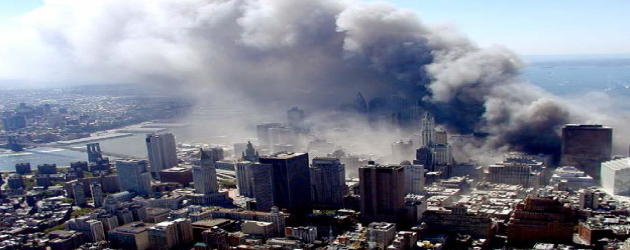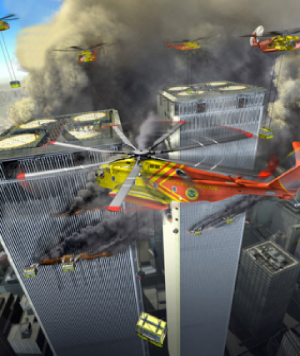By Vincent Dunn Deputy Chief, FDNY, (Ret)
1. Police and fire in New York City have no unified incident command, with a single agency in charge. The new emergency command protocol issued by the mayor’s office is said by some to be ambiguous because it does not clearly define who is in charge. Union leaders representing city firefighters and fire officers have sent a letter to Homeland Security Secretary Tom Ridge criticizing the city’s new emergency protocol, saying it does not meet federal requirements, and asking for a meeting to discuss their concerns.
2. Firefighter radios still are not able to transmit messages in high-rise buildings, subways and tunnels. Battalion chiefs may carry portable booster radios (each weighing 22 pounds) that enhance communications between the fire ground commanders and firefighters’ portable radios. This so-called “quick fix” is nowhere near complying with the recommendation of the McKinsey & Co. consulting report Increas ing FDNY’s Prep arednes s , Fire Commissioner Nicholas Scoppetta stated. McKinsey recommended that building owners install and maintain permanent equipment (an inbuilding repeater) that picks up and amplifies walkie-talkie signals.
3. Elevators still fail at high-rise fires due to fire, heat and water. Fire and heat short out elevator call buttons. Water from sprinklers and firefighters’ hose streams shorts out wires in elevator shafts. On Oct. 24, 1991, a study conducted by the FDNY’s Division of Fire Prevention on the effectiveness of Phase II elevator systems during fires (firefighter service) from 1983 to 1990 indicated the following:
• 178 major fire incidents were compiled.
• At 59 of the fires (one-third), elevator failure occurred either upon arrival or after a period of time.
• 37% of the 59 failures were a result of a fire or due to water.
A Phase III elevator system was recommended. This is an elevator that would be enclosed and
protected from fire, smoke and water, and could be used by disabled people for evacuation during a
high-rise fire.
4. The firefighting strategy of “defend in place” (extinguishing a fire while occupants remain inside a high-rise office building) imposed on the fire service by builders has proven to be unworkable and unrealistic, as lightweight high-rise office buildings became less fire resistive and the floor areas became larger in the last half of the 20th century. The defend-in-place strategy is based on three
factors:
• That a high-rise building is fire resistive and occupants can stay in the building without being
exposed to smoke and fire.
• That firefighters can extinguish a fire in a high-rise office building.
• That the occupants of a high-rise office building will comply with the fire chief’s instructions. Today, high-rise office buildings are not fire resistive because smoke spreads readily throughout the air systems. The large, 10,000-square-foot office floor areas are beyond the firefighter’s hose stream extinguishing capability. High-rise firefighting has become similar to a “controlled burn”; firefighters protect the stairs while the floor contents burn. Since 9/11, it is very unlikely occupants of a high-rise office will comply with the fire chief’s instructions to remain in place while a fire is being extinguished. All high-rise office buildings must have automatic sprinklers and floor compartmentation into areas of less than 5,000 square feet.
5. It has been revealed there is no scientific basis for the required 1/12-inch thickness of “fluffy sprayon
fire retarding” used to get a two-hour fire protection rating on steel floor beams. It appears there is a problem when you consider this
fallacy in addition to the other problems of “fluffy spray-on fire retarding” for structural steel, such as:
• The spray-on mixture can be improper, affecting insulating quality.
• Improper application may leave areas of steel unprotected.
• The applied thickness may be uneven.
• The material can be scraped off easily by other workers during construction and may not be
replaced.
6. There have been no changes in the New York City building code based on the recommendations of the building code task force committee formed as result of the World Trade Center collapse. One 110-story tower collapsed completely in 10 seconds , the other collapsed completely in eight seconds. As one construction expert stated, the buildings collapsed so rapidly and completely not
because of illegal construction techniques, but because of weak construction techniques. Many building code changes have been proposed, but no changes have been made. The bill is being held in the office of the mayor’s office and city council. The city is about to rewrite the entire building code. The city’s adoption of the World Trade Center building code task force recommendations will be further delayed for adoption with the new code for several years.
7. The Port Authority of New York and New Jersey is rebuilding at ground zero. These new structures, again, do not comply with New York City’s building and fire codes.
8. The recommendation of the McKinsey & Co. report , Increasing FDNY’s preparedness, that called for a second hazardous materials unit has not been implemented. With the danger of multiple, simultaneous terrorist attacks likely, the one hazardous material unit will be available for one of the incidents. Instead, 600 firefighters have been trained in hazardous material incidents and 25 ambulances equipped to transport injured people exposed to hazardous materials have been purchased. The police department has been designated the primary agency at events involving dangerous (hazardous) materials, a departure from the rest of the nation.
9. The City of New York has closed six fire companies: four firehouses in Brooklyn, one in the Harlem section of Manhattan and one in Astoria, Queens.
10. The City of New York has eliminated 180 firefighter and officer positions as result of the closings.
11. The City of New York in the year 2003 reduced the staffing of 20 engine companies from five firefighters to four firefighters because medical leaves increased in the department. Many leaves were related to injuries from operating at the World Trade Center collapse rescue and recovery operations.
12. The City of New York is continuing to remove street fire alarm boxes. This emergency fire and police reporting was one of the few communications outlets that worked during the Aug. 14, 2003, blackout. Cell phones failed, 911 failed and FDNY’s computer dispatching
system malfunctioned.




